The rugged landscapes of northern Vietnam offer travelers an intoxicating blend of natural wonders, ancient traditions, and cultural immersion unlike anywhere else in Southeast Asia. From limestone karsts rising dramatically from emerald waters to terraced rice fields cascading down mountainsides, the north vietnam places to visit provide both iconic postcard scenes and hidden gems waiting for discovery. Join Phieu Travel as we guide you through this captivating region, sharing insider knowledge and practical advice to create your perfect northern Vietnamese adventure.
1. Where to Go: Essential Destinations in Northern Vietnam
Northern Vietnam’s diverse landscape unfolds like a masterfully painted scroll, revealing everything from bustling ancient cities to remote mountain villages. Each destination tells its own story through architecture, cuisine, and local customs that have survived for centuries. Phieu Travel has carefully curated this selection of must-visit locations that showcase the region’s most spectacular offerings places that have consistently left our travelers speechless and eager to return.
1.1 Hanoi
The vibrant capital serves as the perfect introduction to northern Vietnam’s charms. Hanoi’s Old Quarter buzzes with energy as motorbikes weave through narrow streets lined with colonial architecture and makeshift food stalls. The city elegantly balances its ancient soul with modern development. Early mornings reveal elderly residents practicing tai chi around Hoan Kiem Lake while young professionals sip coffee in trendy cafes nearby.
Don’t miss the Temple of Literature, Vietnam’s first national university built in 1070, where ancient stone turtles bear the names of successful scholars. The Ho Chi Minh Mausoleum and Museum provide insight into the country’s revolutionary history. Phieu Travel recommends taking a street food tour through the maze-like Old Quarter, where you’ll sample iconic dishes like bun cha (grilled pork with noodles) and egg coffee a delicious Hanoi specialty.
For an authentic experience, wake up early to visit the Long Bien Market, where vendors gather before dawn to sell fresh produce from surrounding villages. The city’s pace changes dramatically throughout the day. Evenings transform Hanoi into a different world entirely, with sidewalk eateries spilling onto streets and the gentle glow of lanterns reflecting in the lake.
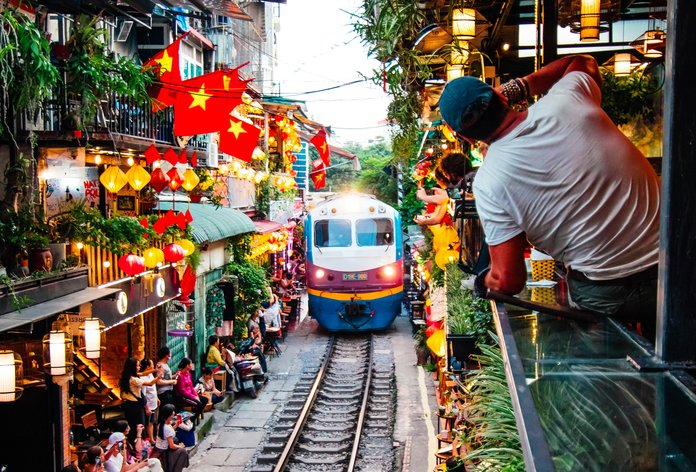
1.2 Ha Long Bay
This UNESCO World Heritage site needs little introduction, with its 1,600 limestone islands and islets creating a seascape that appears almost otherworldly. Ha Long Bay’s emerald waters have been the setting for countless photographs, yet nothing compares to witnessing this natural wonder firsthand. The name translates to “descending dragon,” referencing the local legend that the islands were created by dragons who spat jewels into the sea to protect Vietnam from invaders.
Traditional wooden junks and modern cruise boats offer overnight experiences that allow you to fully appreciate the bay’s changing moods. Morning mist clings to the karsts, creating ethereal scenes as the sun gradually burns through. Many cruises include visits to floating fishing villages where generations have lived on the water, their entire lives centered around the bay’s bounty.
Active travelers can kayak through hidden lagoons and swim in secluded coves. Sung Sot Cave (Surprise Cave) reveals massive chambers adorned with stalactites and stalagmites. Phieu Travel’s partners offer cruises that escape the more crowded areas, taking you to less-visited parts of the bay where silence is broken only by the gentle lapping of water against limestone.
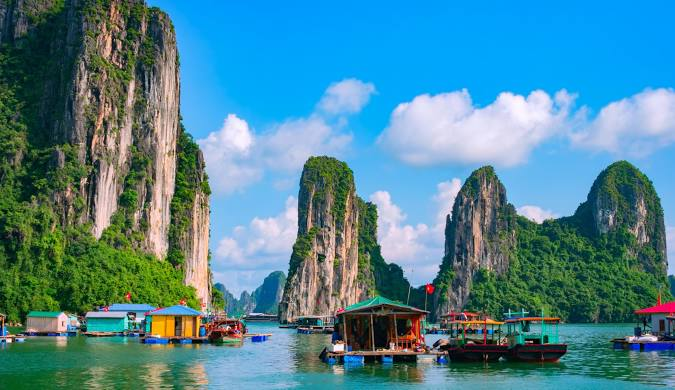
1.3 Sapa & Fansipan
Nestled in the Hoang Lien Son mountain range near the Chinese border, Sapa has long been a favorite retreat from Vietnam’s tropical heat. The town sits at 1,600 meters above sea level, offering cool temperatures and spectacular mountain vistas. Terraced rice fields cascade down steep valleys, changing colors with the seasons emerald green during growing months and golden before harvest.
Sapa’s true treasure is its cultural diversity. The region is home to several ethnic minority groups, including the H’mong, Red Dao, and Tay people, who maintain distinct languages, dress, and traditions. Local markets burst with color as tribe members in traditional attire gather to trade goods and socialize. Visits to authentic villages provide glimpses into ways of life largely unchanged for centuries.
For adventure seekers, conquering Fansipan Indochina’s highest peak at 3,143 meters offers both challenge and reward. A modern cable car now makes the summit accessible to all visitors, but Phieu Travel can arrange guided treks for those seeking a more immersive mountain experience. The panoramic views from the top extend across Vietnam into neighboring China and Laos, creating a profound sense of standing on the roof of Indochina.

Ha Giang Loop vs Sapa? The Ultimate Guide for Solo Adventurers in Northern Vietnam
1.4 Ninh Binh & Tam Coc
Often called “Ha Long Bay on land” Ninh Binh province showcases limestone karsts rising dramatically from flat rice paddies rather than ocean waters. Just a two-hour drive from Hanoi, this area offers a more accessible taste of northern Vietnam’s stunning landscapes. Ancient temples hide within mountain caves while rivers wind lazily through valleys of impossibly green fields.
Tam Coc (“three caves”) presents the quintessential Ninh Binh experience: a boat journey along the Ngo Dong River, passing through limestone tunnels and between towering karsts. Local women often row these small boats using their feet rather than hands a fascinating traditional technique developed over generations. The river journey is particularly magical in late May and early June when the rice fields turn golden.
Nearby, Trang An Landscape Complex offers similar boat rides but with less crowding and more caves to explore. The ancient capital of Hoa Lu contains temples dedicated to emperors from the Dinh and Le dynasties, reflecting Vietnam’s rich royal history. Phieu Travel recommends visiting the newly accessible Mua Cave, where climbing 500 steps rewards you with a breathtaking panoramic view of the entire region a favorite spot for photographers.
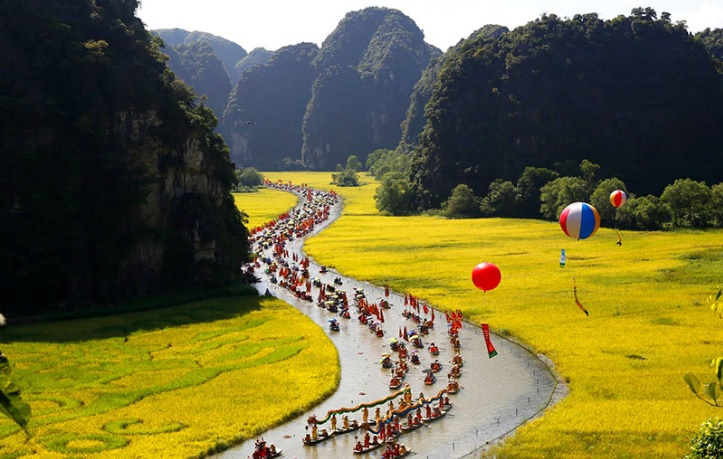
1.5 Ha Giang & Dong Van Karst Plateau
For travelers seeking Vietnam at its most raw and authentic, Ha Giang province delivers an experience unlike any other. This remote northern frontier shares a border with China and remains delightfully untouched by mass tourism. Dramatic limestone formations create an almost lunar landscape across the Dong Van Karst Plateau Geopark a UNESCO-recognized wonder with peaks and valleys that seem to stretch infinitely.
The legendary Ma Pi Leng Pass cuts through mountains along what locals call the “Happiness Road,” offering vertigo-inducing views of the Nho Que River’s turquoise waters far below. This winding mountain road presents one of Asia’s most spectacular drives. Small ethnic minority villages dot the landscape, with traditional homes built from clay and stone that blend harmoniously into the environment.
Sunday markets in Dong Van and Meo Vac towns transform into vibrant cultural exhibitions as H’mong, Dao, Lo Lo, and other ethnic groups gather in traditional dress. The historic Hmong King’s Palace in Sa Phin village offers a glimpse into the region’s complex political history. Phieu Travel arranges responsible motorbike tours with local guides who know the safest routes and most authentic experiences across this challenging terrain.

The Ultimate Ha Giang Loop Guide (2025): Itinerary, Map & Tips
1.6 Pu Luong & Mai Chau
Just a few hours west of Hanoi, these neighboring regions offer a gentler introduction to rural Vietnam through verdant valleys and traditional stilt houses. Mai Chau presents a more developed approach to homestay tourism, where White Thai villages welcome visitors into their communities. The valley floor spreads out in a patchwork of rice fields bordered by limestone cliffs on all sides.
Nearby Pu Luong Nature Reserve provides a more pristine environment with fewer tourists, where traditional farming methods continue unchanged for centuries. Water wheels and bamboo irrigation systems channel mountain streams to nourish terraced fields. The biodiversity here is remarkable, with rare plant species and butterflies adding splashes of color to forest trails.
Both regions excel in authentic homestay experiences, where visitors sleep in traditional stilt houses and share meals with local families. Cycling between villages on flat valley roads offers an ideal way to explore at a relaxed pace. Phieu Travel partners with community-based tourism initiatives here that ensure tourism benefits flow directly to local inhabitants while preserving their way of life.
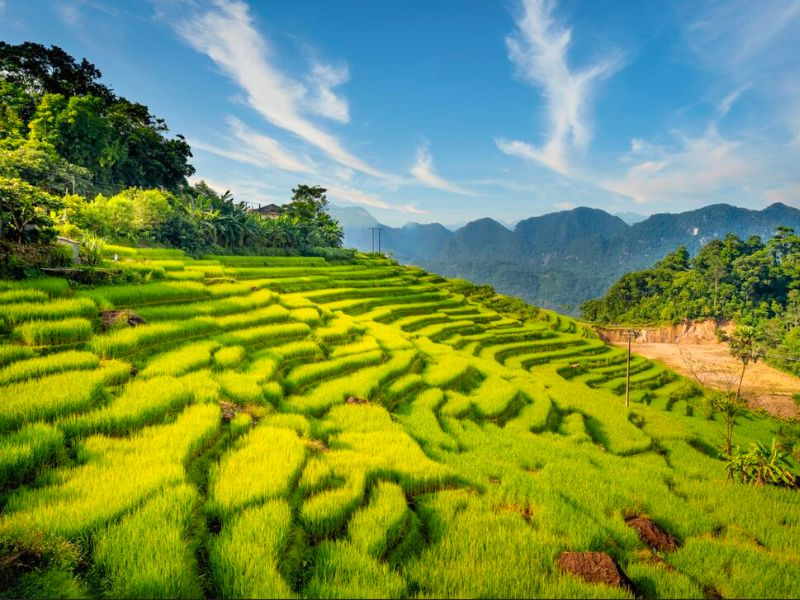
Ha Giang weather by month complete local guide for travelers
2. Off-the-Beaten-Path: Hidden Gems and Authentic Villages
Beyond the well-established tourism circuit lie northern Vietnam’s true treasures places where traditions remain vibrant and visitors are still a novelty. These destinations require extra effort to reach but reward travelers with authentic cultural exchanges and breathtaking scenery free from crowds. Phieu Travel specializes in connecting adventurous travelers with these hidden corners, where the essence of Vietnam’s diverse cultures and landscapes remains largely untouched.
2.1 Mu Cang Chai
This remote district in Yen Bai province hosts what many consider Vietnam’s most spectacular rice terraces. Created by the H’mong people over centuries, these cascading fields transform mountainsides into living works of art. The terraces change dramatically with the seasons reflecting pools of water during planting, vibrant green during growth, and golden waves at harvest time in September and October.
Unlike more accessible rice terraces elsewhere in Asia, Mu Cang Chai remains wonderfully authentic. Farmers still work these fields using traditional methods, with water buffalo plowing and entire families harvesting by hand. The road journey here winds through mountain passes with heart-stopping views around every corner. Small villages nestle in valleys where electricity arrived only in recent decades.
For photographers, sunrise at Mu Cang Chai creates unforgettable scenes as morning mist weaves between terraces and mountains. The La Pan Tan, Che Cu Nha, and Ze Xu Phinh communes offer the most spectacular views. Phieu Travel arranges homestays with local families, allowing visitors to experience daily life in this remote region while contributing directly to household incomes in one of Vietnam’s poorest areas.
Exploring Mu Cang Chai – Ha Giang: Where to Go, What to Eat, and Where to Stay
2.2 Cao Bang
Bordering China in Vietnam’s northeast, Cao Bang province combines extraordinary natural beauty with profound historical significance. The region’s crown jewel is Ban Gioc Waterfall one of Asia’s largest transboundary waterfalls, straddling the border between Vietnam and China. Multiple tiers of cascading water create a tableau that seems torn from a classical Chinese landscape painting, especially beautiful during the rainy season from May to September.
Nearby, the otherworldly Nguom Ngao Cave system stretches for kilometers underground with massive chambers filled with limestone formations. The province also holds special importance in Vietnamese history as the base from which Ho Chi Minh launched the revolution after returning from exile. His simple hideout at Pac Bo Cave can still be visited today.
The Tay, Nung, and Dao ethnic groups predominate here, each maintaining distinct cultural practices. Traditional blacksmiths in Phuc Sen village continue crafting knives and agricultural tools using methods passed down through generations. Markets throughout the province offer authentic cultural immersion without the commercial atmosphere found in more touristy areas. Phieu Travel’s guides in this region come from local communities, offering insights that go far beyond standard tourism narratives.

2.3 Local Ethnic Markets
Northern Vietnam’s vibrant markets offer windows into the region’s cultural diversity, functioning not just as commercial spaces but as social hubs where different ethnic groups gather. Unlike markets curated for tourists, these authentic gatherings follow traditional schedules often based on the lunar calendar and primarily serve local needs. Each market reflects the specific ethnic groups of its area, creating distinctive atmospheres and merchandise.
Bac Ha Sunday Market stands out for its scale and cultural richness, drawing Flower H’mong people distinguished by their extraordinarily colorful traditional dress. The market begins at dawn as villagers arrive from surrounding mountains, some walking for hours. Sections selling traditional herbs, handmade textiles, and livestock create a sensory feast. The potent local corn liquor (known as ruou ngo) flows freely, especially in the food section where men gather for morning drinks.
Can Cau Market (Saturdays) and Coc Ly Market (Tuesdays) offer smaller but equally authentic experiences with fewer outside visitors. In Ha Giang, the Dong Van and Meo Vac Sunday markets feature strong cultural elements from the Lo Lo and Pu Peo minorities some of Vietnam’s smallest ethnic groups. Phieu Travel times itineraries to coincide with these market days, often arriving early when locals do their trading before tourist groups appear.
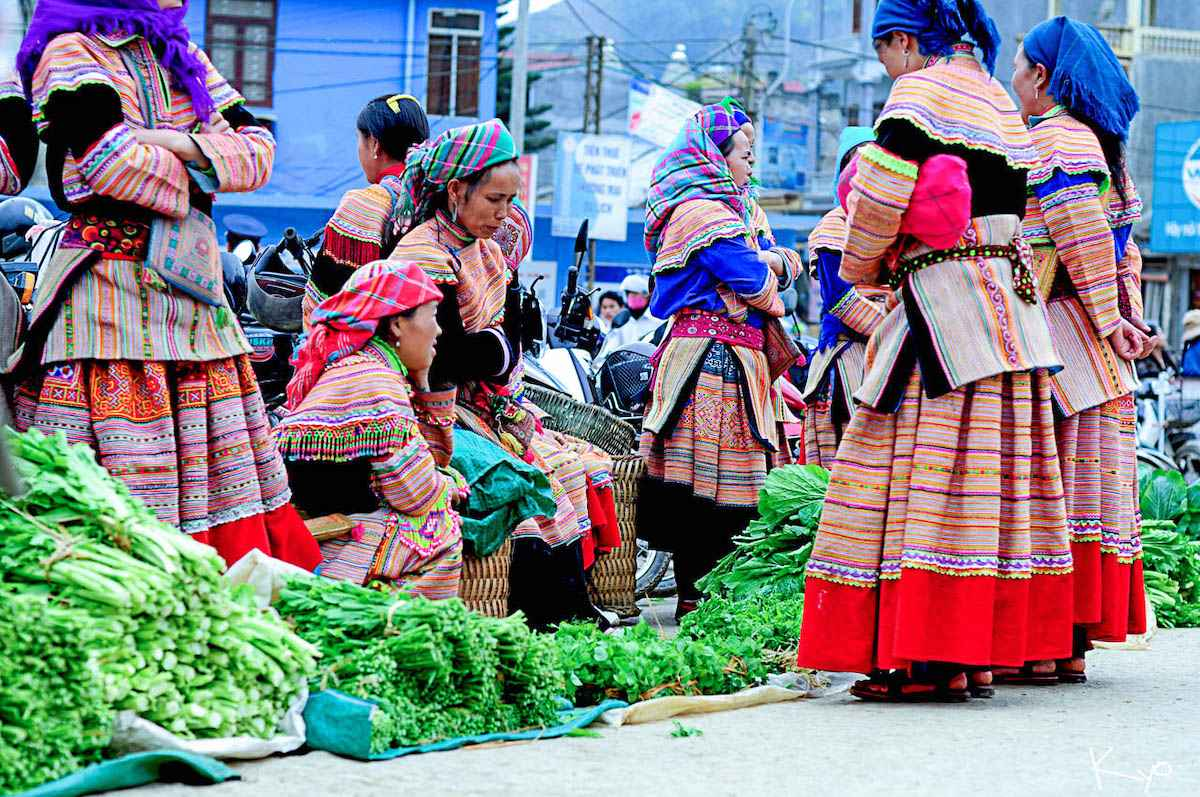
Top 8 Ethnic Markets to Visit in Ha Giang, Vietnam
3. When to Visit: Weather, Seasons, and Festivals
Timing your northern Vietnam adventure requires careful consideration of both weather patterns and cultural calendars. The region’s climate varies dramatically by elevation and season, creating distinct travel experiences throughout the year. While some areas remain pleasant year-round, others transform completely with the changing seasons. Phieu Travel helps clients navigate these variables to design journeys that match their preferences for comfort, scenery, and cultural immersion.
The October to April dry season generally offers the most comfortable weather for exploring northern Vietnam. Clear skies and moderate temperatures make this ideal for trekking and outdoor activities. December and January bring chilly conditions to mountainous areas like Sapa and Ha Giang, with occasional frost and temperatures that can drop below freezing at night. This period rewards photographers with misty mornings and crystal-clear mountain views.
May through September brings the summer monsoon, characterized by high humidity and regular rainfall. While this creates challenges, it also transforms landscapes waterfalls reach peak flow, rice fields achieve their most vibrant green, and mountain streams fill with rushing water. Rain typically falls in short, intense afternoon bursts rather than all-day downpours. Phieu Travel’s summer itineraries build in flexibility to work around weather patterns.
Northern Vietnam’s festival calendar adds another dimension to timing considerations. Tet (Lunar New Year) falls between late January and mid-February, bringing colorful celebrations but also mass domestic travel that can complicate logistics. Ethnic minority festivals occur throughout the year, often tied to agricultural cycles or spiritual beliefs. The Khau Vai Love Market in Ha Giang (March), Giay ethnic group’s Long Tong Festival (February), and H’mong New Year celebrations (December) offer authentic cultural experiences for travelers willing to venture beyond standard attractions.
For photographers and scenery enthusiasts, rice harvest season (September-October) creates golden landscapes throughout the northern mountains. This coincides with moderate temperatures and decreasing rainfall, making it perhaps the most desirable travel period overall. Spring (February-April) brings plum and peach blossoms to higher elevations, adding splashes of color to mountainsides and villages.
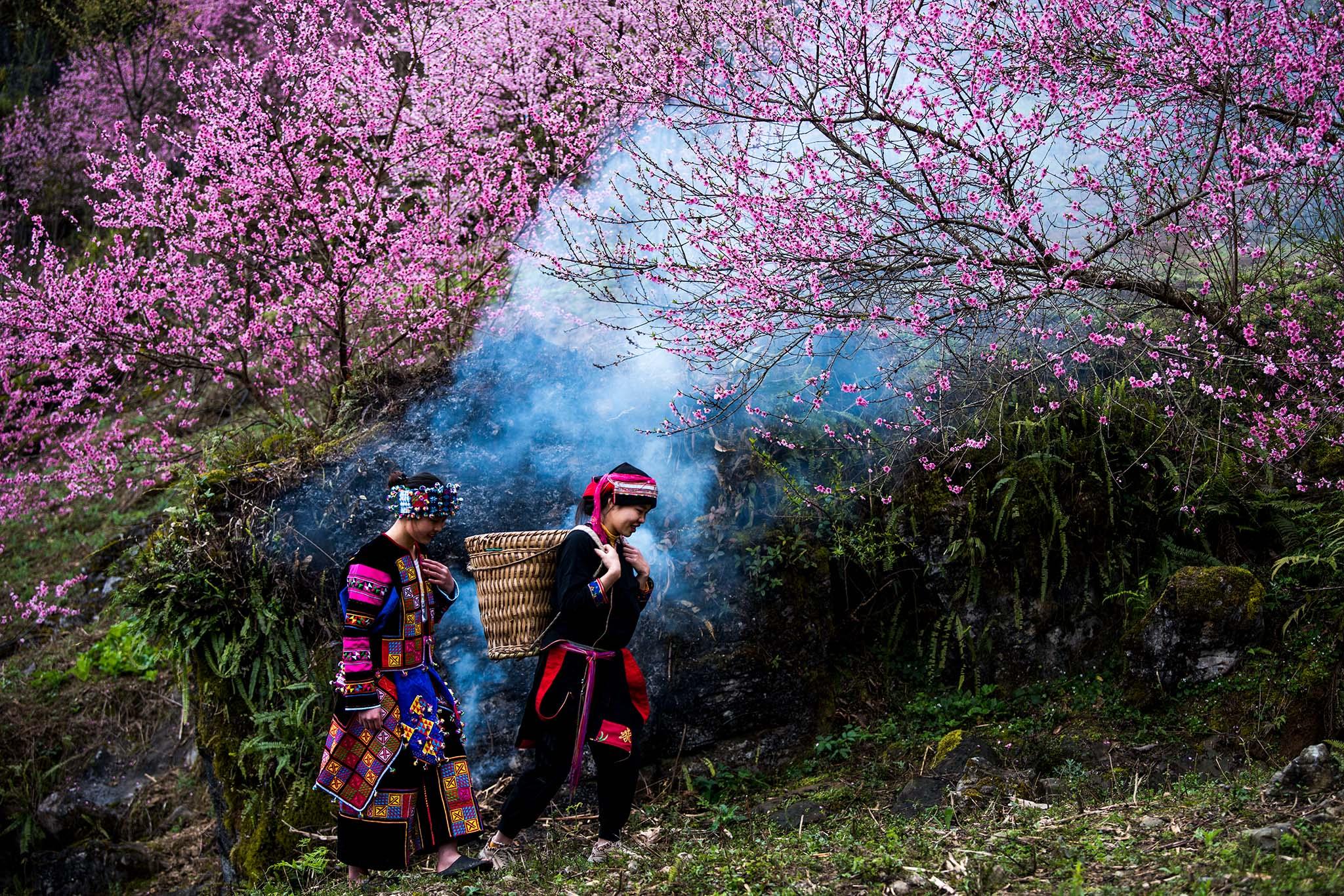
The Best Time to Visit Ha Giang: A Seasonal Guide to Flowers & Festivals
4. How to Get Around: Transportation Tips for Northern Vietnam
Navigating northern Vietnam’s diverse terrain requires adaptability and a sense of adventure. Transportation options range from modern high-speed trains to traditional wooden boats and everything in between. The journey itself often becomes a highlight of the travel experience, offering intimate glimpses of daily life and spectacular scenery unavailable to those who rush between destinations. Phieu Travel specializes in creating thoughtful connections that balance efficiency with immersive travel experiences.
Domestic flights connect Hanoi with regional hubs like Dien Bien Phu and Dong Hoi, saving valuable time for those with limited itineraries. Vietnam Airlines and Bamboo Airways operate modern fleets with good safety records. For destinations without airports, Vietnam’s improving road network allows relatively comfortable travel by private car or minivan. This option provides flexibility for spontaneous stops at viewpoints, villages, or local restaurants that catch your interest.
Public buses reach even remote corners of the region at remarkably low cost, though comfort varies dramatically. Express buses between major destinations often feature reclining seats and air conditioning. Local buses serving rural areas may be basic but offer authentic travel experiences alongside Vietnamese families, farmers, and traders. Patience becomes essential as schedules remain flexible concepts in remote regions.
For adventurous travelers, motorbikes represent the quintessential northern Vietnam transportation experience. Whether you ride independently or hire a driver, two wheels allow access to narrow mountain roads and remote villages unreachable by larger vehicles. The iconic Ha Giang Loop and roads around Sapa showcase the region’s most spectacular scenery. Phieu Travel arranges quality bikes and experienced guides who prioritize safety while knowing exactly which viewpoints and hidden spots deserve your attention.
Trains offer comfortable overnight connections between Hanoi and Lao Cai (for Sapa), with private cabins available on some services. The journey becomes part of the experience as the train winds through changing landscapes. Within destinations like Ha Long Bay, Tam Coc, and Trang An, small boats provide the primary means of exploration, offering peaceful perspectives impossible to achieve on land.
For travel between neighboring sites, don’t overlook bicycles perfect for exploring flat valley floors in Mai Chau or circling West Lake in Hanoi. Walking remains essential for truly experiencing northern Vietnam’s ancient cities, mountain villages, and nature reserves. Phieu Travel designs itineraries with thoughtful pacing that allows for spontaneous interactions with local people often the memories that last longest after returning home.
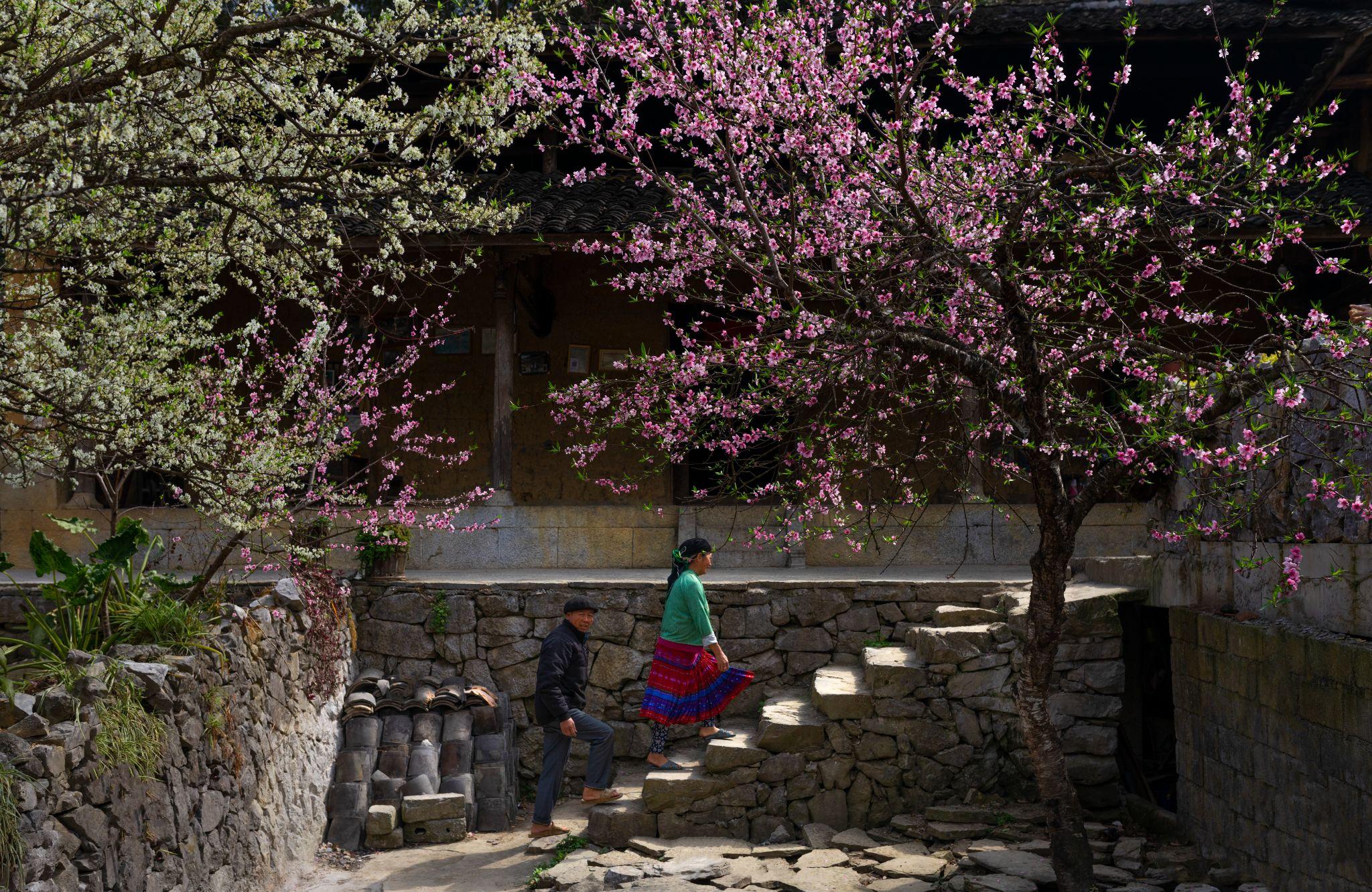
Ha Giang Jeep Tour by Phieu Travel: The Ultimate Adventure on the Ha Giang Loop (2025)
5. Cultural Experiences: Food, Traditions, and Local Life
Northern Vietnam’s soul reveals itself most authentically through its culinary traditions, daily rituals, and community practices that have endured for generations. Beyond the postcard views lies a complex cultural tapestry woven from influences spanning thousands of years of history. By engaging respectfully with these living traditions, travelers gain deeper appreciation for the region and create more meaningful connections. Phieu Travel emphasizes these cultural dimensions, believing they transform ordinary tourism into transformative travel experiences.
5.1 Northern Vietnamese Cuisine Highlights
The north’s cuisine differs distinctly from central and southern Vietnamese food, featuring subtle flavors, less spice, and greater Chinese influence. Hanoi’s pho originates here a clear, complex beef broth with flat rice noodles, herbs, and thinly sliced meat. Unlike southern versions, northern pho remains elegantly simple without bean sprouts or excessive garnishes. Early mornings in any northern city reveal locals perched on tiny stools at street-side pho shops, a daily ritual worth experiencing.
Bun cha grilled pork served with rice noodles, herbs, and dipping sauce represents Hanoi’s signature lunch dish. Cha ca la vong features turmeric-marinated fish sautéed tableside with dill and served with rice noodles and peanuts. In mountain regions, distinctive dishes reflect local ingredients and ethnic minority traditions. The H’mong specialty thang co combines multiple meats in a hearty stew, while the Red Dao people excel in medicinal herbal chicken soups.
Rice wine (ruou) plays a central role in northern Vietnamese hospitality, especially in ethnic minority communities. Village-produced varieties may be infused with herbs, fruits, or even animals believed to impart medicinal properties. Sharing rice wine often accompanies important discussions or celebrations. Phieu Travel’s culinary experiences include both refined city restaurants and family meals in rural homes, demonstrating how food connects with every aspect of Vietnamese culture.
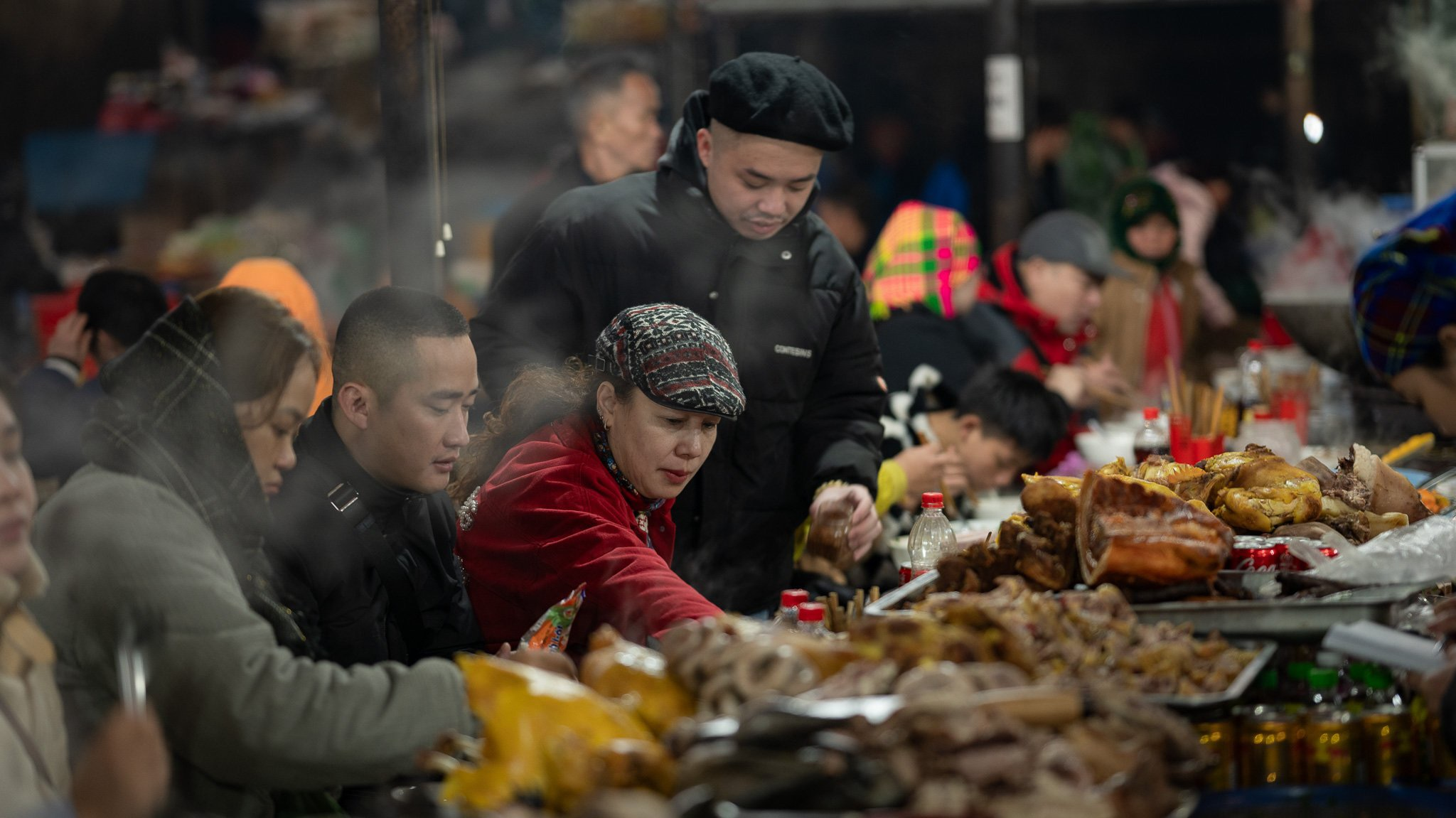
5.2 Homestays and Community Tours
Staying with local families provides unparalleled insights into northern Vietnam’s diverse cultures. Traditional homes whether Tay and Thai stilt houses, H’mong earthen dwellings, or Red Dao wooden structures reflect generations of adaptation to specific environments and belief systems. Sleeping spaces typically remain simple but comfortable, with improvements made for visitors while maintaining authentic architectural elements.
Evening meals in homestays become cultural exchanges, with family members often sharing stories and traditions over home-cooked dishes. Many homestay hosts demonstrate traditional skills like weaving, blacksmithing, or preparing ceremonial items. In communities practicing animism or ancestor worship, visitors may observe household rituals that provide windows into spiritual beliefs predating Buddhist and Confucian influences.
Community-based tourism initiatives throughout northern Vietnam now offer structured experiences that support local development while preserving cultural integrity. Village walking tours led by resident guides, craft workshops, agricultural activities, and traditional music performances allow meaningful engagement without intrusion. Phieu Travel partners exclusively with community tourism projects that maintain high ethical standards, ensure fair compensation for locals, and minimize negative cultural impacts.
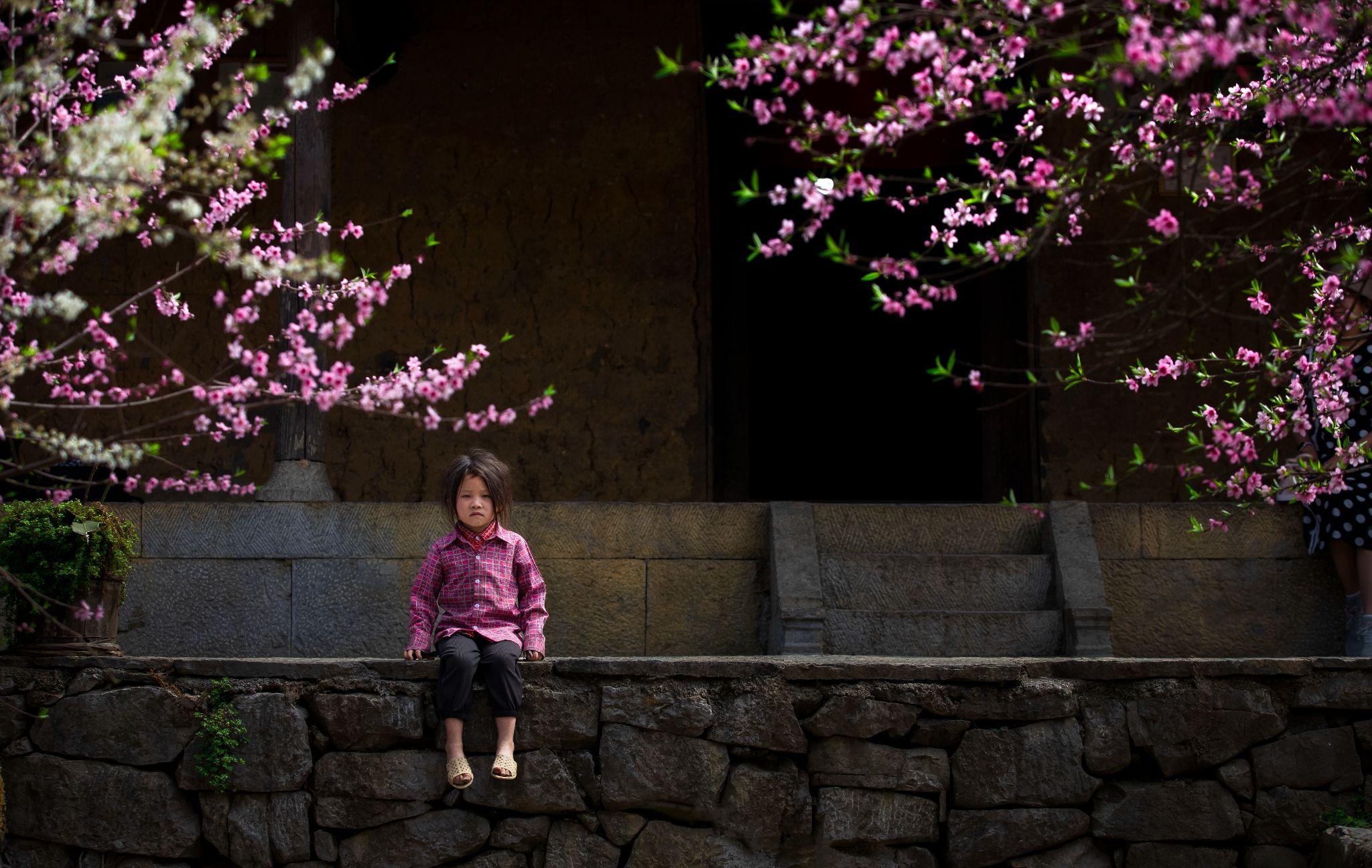
6. Essential Travel Tips and FAQ
Preparing properly for northern Vietnam ensures both comfort and deeper cultural appreciation during your journey. The region’s diverse climate, mountainous terrain, and distinct cultural practices require thoughtful planning different from beach destinations elsewhere in Southeast Asia. Phieu Travel has compiled these essential recommendations based on years of guiding travelers through Vietnam’s northern provinces, addressing the most common questions and concerns while suggesting approaches that enhance the overall experience.
6.1 Safety and Language
Northern Vietnam ranks among Southeast Asia’s safest destinations for travelers. Violent crime remains extremely rare, while petty theft occurs primarily in major tourist areas. Exercise normal precautions in crowded markets and nightlife districts. The greatest safety concerns involve transportation choose reputable providers for buses, boats, and especially motorbikes. Phieu Travel works exclusively with operators maintaining strong safety records and proper insurance.
While younger Vietnamese in cities often speak some English, language barriers become more pronounced in rural areas. Learning basic Vietnamese phrases demonstrates respect and facilitates warmer interactions. The tonal nature of Vietnamese makes pronunciation challenging, but locals genuinely appreciate any attempt to speak their language. Phieu Travel provides clients with phonetic guides to essential phrases and ensures qualified English-speaking guides accompany travelers in remote regions.
When photographing people, especially ethnic minorities, always ask permission first. Some communities hold spiritual beliefs about photography, while others have experienced exploitative practices from previous visitors. A respectful approach taking time to interact before raising your camera typically results in more authentic images and positive cultural exchange.

6.2 Packing, Etiquette, and Health
Northern Vietnam’s variable climate necessitates layered clothing suitable for both tropical heat and mountain chill. Even in summer, bring a light jacket for evenings and air-conditioned spaces. During winter months (December-February), temperatures in highland areas like Sapa can drop below freezing, requiring warm jackets, hats, and gloves. Quick-dry clothing proves invaluable during the rainy season when afternoon showers occur regularly.
Vietnamese culture values modesty, particularly in rural areas and religious sites. Keep shoulders and knees covered when visiting temples, communal houses, and traditional villages. Remove shoes when entering homes, especially in ethnic minority communities where floors often serve as both living and sleeping spaces. Gifts for homestay hosts are appreciated local products from your home country often make thoughtful options.
Tap water throughout Vietnam remains unsafe for drinking. Bottled water is widely available, though Phieu Travel encourages clients to use refillable bottles with purification systems to reduce plastic waste. Basic medications for stomach issues, allergies, and pain relief should accompany any traveler, particularly when visiting remote areas. Travel insurance with evacuation coverage remains essential for mountain trekking and motorbiking adventures.

7. Frequently Asked Questions
Looking for the best places to visit in Northern Vietnam? Phieu Travel answers the most common questions to help you plan a smooth and memorable trip.
What are the top places to visit in Northern Vietnam?
The must-see destinations include Hanoi’s atmospheric Old Quarter, the limestone karsts of Ha Long Bay, Sapa’s terraced mountains and ethnic villages, Ninh Binh’s “inland Ha Long Bay” landscapes, and the dramatic mountain passes of Ha Giang. Less-visited but equally rewarding are Mu Cang Chai’s spectacular rice terraces, Mai Chau’s peaceful valleys, and Ban Gioc Waterfall on the Chinese border. Phieu Travel recommends combining 3-4 of these destinations for a balanced 10-14 day itinerary.
How many days do I need for a Northern Vietnam trip?
A comprehensive northern Vietnam experience requires at least 10-14 days to accommodate travel time between distant destinations. With just 7 days, focus on Hanoi, Ha Long Bay, and either Ninh Binh or Sapa. Two weeks allows you to include Ha Giang or more remote areas while maintaining a comfortable pace. Remember that mountain roads often require more travel time than distances suggest, and the region rewards slow travel rather than rushed sightseeing.
What is the best time of year to visit North Vietnam?
October through April offers the most reliable weather, with clear skies and comfortable temperatures throughout the region. September-October brings golden rice harvests to mountain terraces, creating spectacular landscapes. December-February sees cold temperatures in high elevations but clear mountain views. The May-August rainy season creates lush green scenery but can complicate outdoor activities with afternoon downpours. Each season offers distinctive experiences Phieu Travel can help design itineraries that maximize the advantages of your travel period.
How do I get between destinations in Northern Vietnam?
Transportation options include domestic flights, trains, private cars, public buses, and motorbikes. Hanoi serves as the transportation hub, with connections to all major northern destinations. Overnight trains connect Hanoi to Lao Cai (for Sapa). Private car hire with drivers provides the most flexible approach for families and small groups. Motorbike tours offer the most immersive experience for adventurous travelers in mountainous regions. Phieu Travel arranges seamless connections between destinations with reliable operators and contingency plans for weather or seasonal road conditions.
Is Northern Vietnam safe for tourists?
Northern Vietnam remains one of Southeast Asia’s safest regions for international travelers. Violent crime is extremely rare, while petty theft occurs primarily in tourist areas of major cities. The greatest safety considerations involve transportation particularly motorbike safety in mountain regions and weather conditions during the rainy season when landslides can affect remote roads. By traveling with reputable companies like Phieu Travel that monitor conditions daily and work with experienced local guides, visitors can explore even remote areas with confidence.
The northern regions of Vietnam offer travelers an extraordinary blend of natural wonders, living cultural traditions, and adventures that range from gentle to exhilarating. Whether wandering Hanoi’s ancient streets, sailing between limestone islands, or trekking to remote ethnic villages, the experiences found here remain authentic and profoundly moving. The north vietnam places to visit continue evolving as infrastructure improves, yet the soul of the region its proud people, dramatic landscapes, and rich heritage remains gloriously intact. Let Phieu Travel guide your journey through this magnificent region, where every winding road and mountain pass reveals new discoveries. For more information and personalized itineraries, visit Phieutravel.com.
Read more:
- Ha Giang Loop in December best weather for epic adventure
- Ha Giang Loop cost guide 2025: real prices, tour options & savings
- Ha Giang Motorbike Loop: The Ultimate Tour with Phieu Travel
- Driving License Requirements for Vietnam Motorbike Loop (2025 Guide)
- Best time to visit Vietnam ultimate guide by region, month & travel type
- Things to buy in Vietnam the complete traveler’s shopping guide
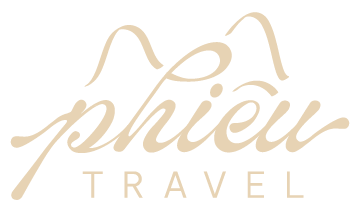
You Might Also Like
Ha Giang Weather in September: Complete Guide for Travelers
Exploring the magnificent Ha Giang Loop in September offers travelers a perfect balance of favorable[...]
Quan Ba Twin Mountains: Ha Giang’s Iconic Fairy Hills and Complete Travel Guide
The mystical Quan Ba Twin Mountains rise from the emerald valleys of Ha Giang like[...]
Vuong family mansion: the architectural marvel and cultural legacy of Ha Giang
Deep in Vietnam’s northern highlands, where mist-shrouded mountains meet terraced rice fields, stands a testament[...]
Ha Giang Loop Safety Tips: How to Ride Securely in Vietnam’s Northern Mountains
The Ha Giang Loop, with its winding mountain roads and breathtaking landscapes, offers one of[...]
The Ultimate Guide to the M-Shaped Curve on Ha Giang Loop
Vietnam’s remote northern province of Ha Giang hides a natural wonder that has captivated adventurous[...]
Most Beautiful Places to Visit in Vietnam: Essential Destinations and Insider Tips
Vietnam captivates travelers with its stunning landscapes, rich cultural heritage, and warm hospitality. From mist-shrouded[...]
Beyond the Beaten Path: Discovering Ha Giang Province in Northeast Vietnam
Ha Giang Province in Northeast Vietnam stands as one of the country’s last frontiers for[...]
Rainy season in Ha Giang: what to expect, when to go, and travel tips
Vietnam’s northern frontier reveals a different face during the rainy season, transforming Ha Giang’s limestone[...]